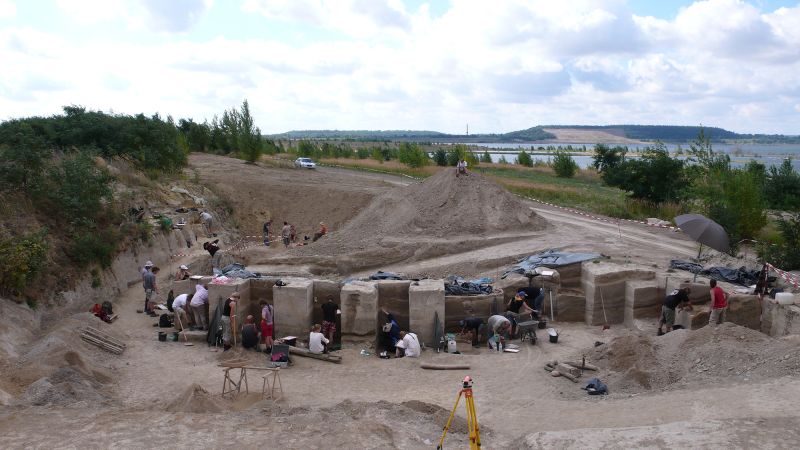Recent archaeological research has unveiled remarkable insights into the dietary and survival strategies of Stone Age humans, specifically Neanderthals, who inhabited a lakeside area in present-day Germany around 125,000 years ago. This groundbreaking study, published in the journal *Science Advances*, identifies an extensive operation for processing animal bones, effectively termed a “fat factory.” Here, groups of ancient humans systematically processed carcasses to extract fatty nutrients, highlighting their advanced understanding of nutrition and resource management.
The research was conducted at the Neumark-Nord site, situated south of Halle city, where archaeologists meticulously analyzed approximately 120,000 bone fragments and 16,000 stone tools excavated over multiple years. The presence of these artifacts, coupled with evidence of controlled fire usage, paints a vivid picture of the Neanderthal community’s resourcefulness and ingenuity in processing food.
Neanderthals are postulated to have employed stone hammers to crush marrow-rich bones, subsequently boiling them for several hours to extract the fat. As the fat rises to the surface upon cooling, it can be skimmed off to create a nutrient-rich dietary supplement. This method of resource extraction illustrates a level of forethought and organizing capabilities among Neanderthals that has often been underestimated. Such processes necessitated not only the successful planning of hunts but also the careful transportation and storage of animal remains for future use, indicating a depth of survival skills that contradicts the longstanding perception of Neanderthals as purely primitive beings.
Wil Roebroeks, a prominent figure in the study and a professor of Paleolithic archaeology at Leiden University in the Netherlands, argues that these findings challenge the notion that Neanderthals were unsophisticated. Instead, the evidence suggests that they were quite clever, exhibiting advanced skills in both planning and technological utilization. This research contributes to a growing body of evidence that has overturned the stereotypical, brutish image of Neanderthals. Archaeological discoveries from recent decades reveal that they engaged in complex activities such as creating musical instruments, crafting tools, making yarn, and even developing artistic expressions like engravings.
The nutritional implications of the findings are significant, as the Neaderthals at Neumark-Nord were clearly aware of the benefits offered by the grease sourced from bones—a noteworthy point given their reliance on animal-based diets rich in protein. To avoid the risk of malnutrition commonly referred to as protein poisoning, individuals within this community would have to regulate their protein intake—emphasizing the need for additional sources of calories in the form of carbohydrates or fats. Lean meats, while essential, were often inadequate on their own for fulfilling dietary requirements.
Interestingly, the research revealed that remains from 172 large animals, including horses, deer, and aurochs, were present at the site, indicating a selective preference for bones rich in marrow. This understanding of the nutritional value of animal remains underscores the physiological necessity of fat consumption for Neanderthals, who were primarily hunter-gatherers requiring a robust source of energy.
The exact methods employed by these ancient humans remain somewhat speculative. However, it is believed they may have constructed containers from materials such as birch bark or animal hides to boil the bones over controlled fires. Critics and proponents alike have noted that Neanderthals may have consumed the resulting fat, possibly incorporating various plant materials for added flavor and nutrition, evidenced by the charred remnants of nuts and fruits found at the excavation site.
The astonishing discoveries at Neumark-Nord have sparked excitement among the archaeological community for what they reveal about the cognitive abilities of Neanderthals. According to independent archaeologist Ludovic Slimak, these findings not only validate longstanding theories regarding Neanderthal dietary practices but also enrich our understanding of their ecological adaptability and hunting prowess. Bruce Hardy, a professor of anthropology at Kenyon College, even suggests that the Neumark-Nord site serves as the pinnacle of evidence for bone-grease rendering during this period of the Stone Age, which underscores the sophisticated survival tactics employed by our ancient relatives.
In conclusion, the intricate strategies recognized in this research illuminate the remarkable capabilities of Neanderthals, provoking a reassessment of their status within the narrative of human evolution and survival. Their adeptness at resource management and nutritional planning establishes them as significant figures rather than mere survivors of their environment.












